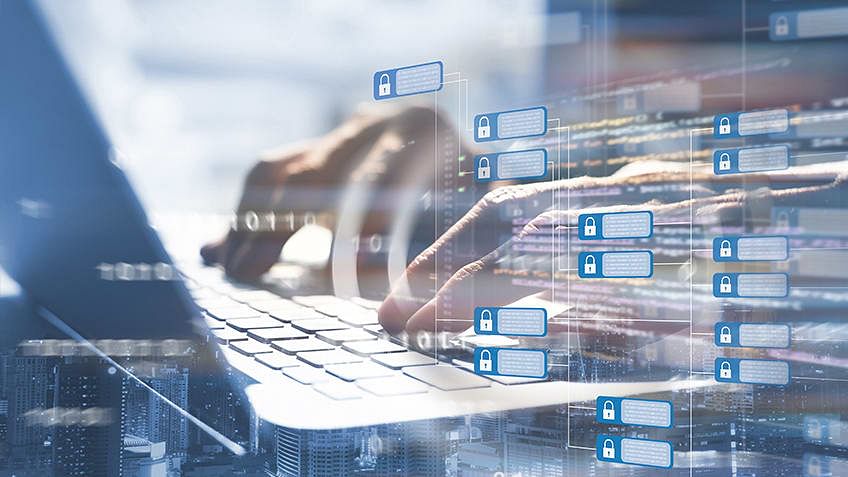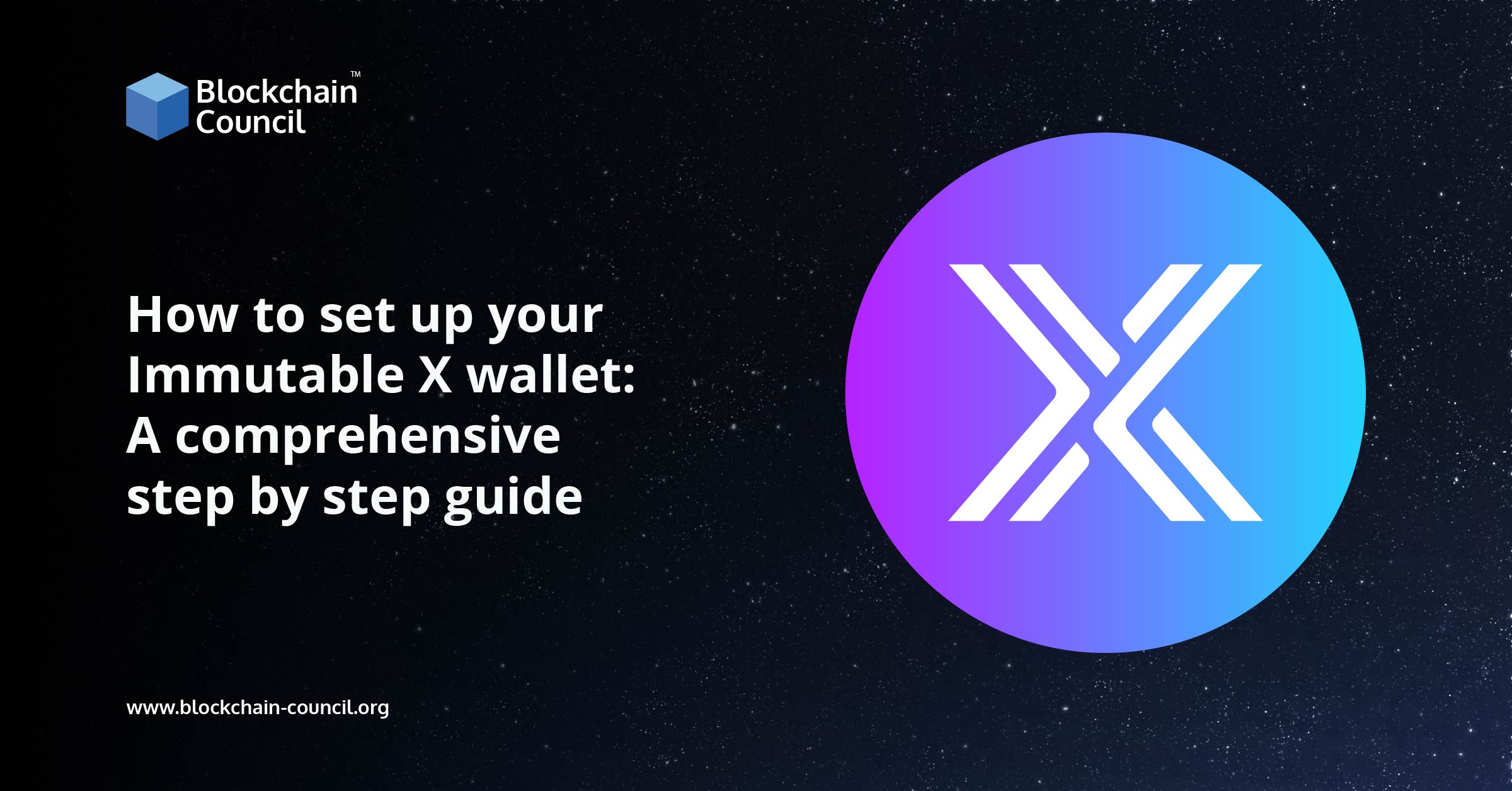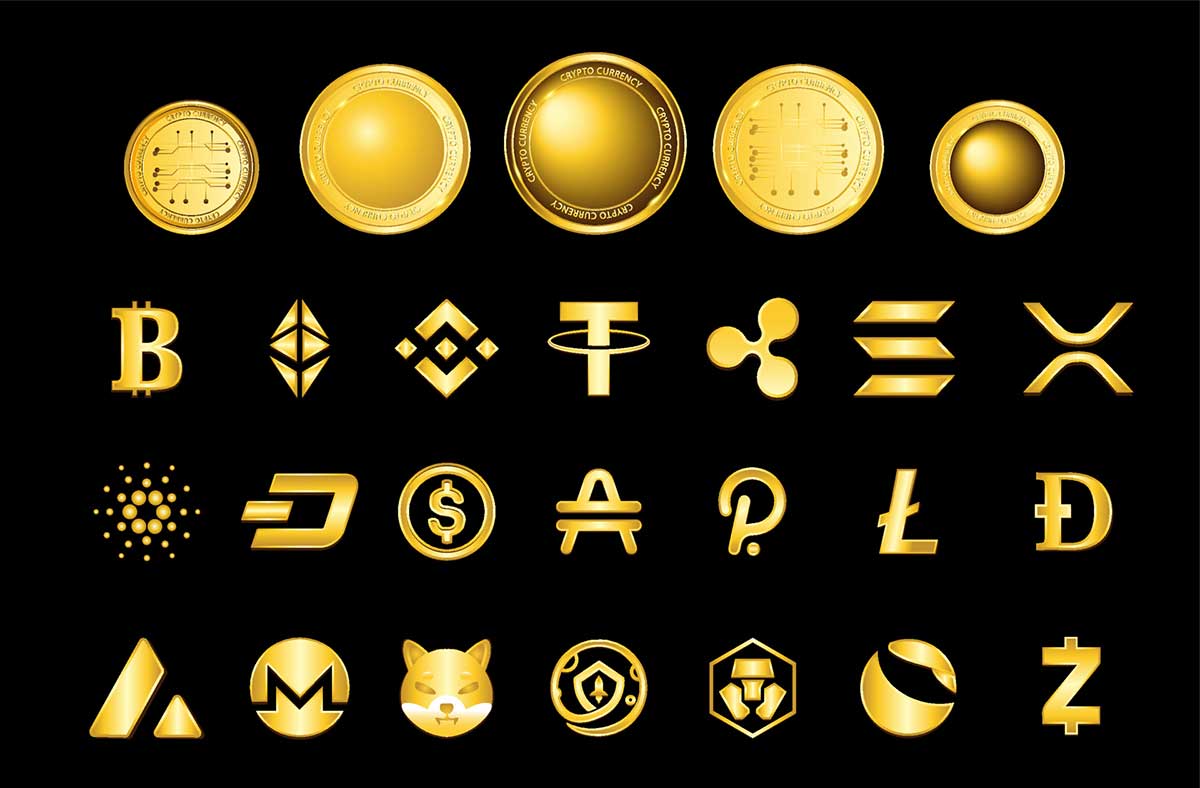How to Verify Blockchain Transactions: A Step-by-Step Guide

To check blockchain transactions, you can use a blockchain explorer website. These websites allow you to enter your transaction id or wallet address to view the details of the transaction, including its status and confirmations.

Credit: www.blockchain-council.org
Understanding The Basics Of Blockchain Transactions
Blockchain technology has gained significant attention in recent years, revolutionizing various industries and offering new possibilities for secure and transparent transactions. At the heart of this technology are blockchain transactions, which enable the transfer of digital assets in a decentralized and immutable manner.
In this section, we will delve into the basics of blockchain transactions, exploring what they are, how they work, and why transaction verification is of utmost importance.
What Is Blockchain?
- A blockchain is a distributed and decentralized ledger that records transactions across multiple computers or nodes.
- It is made up of a chain of blocks, with each block containing a set of transactions.
- Unlike traditional centralized systems, blockchain operates on a peer-to-peer network, ensuring transparency and eliminating the need for intermediaries.
How Do Blockchain Transactions Work?
Blockchain transactions involve several key steps that ensure the integrity and security of the process:
- Initiating a transaction:
- A sender creates a transaction by specifying the recipient’s address and the amount to be transferred.
- The transaction is then digitally signed using the sender’s private key to verify authenticity.
- Broadcast and validation:
- The transaction is broadcasted to the network, reaching multiple nodes.
- Each participating node validates the transaction, ensuring the sender has sufficient funds and the transaction adheres to predefined rules.
- Inclusion in a block:
- Validated transactions are grouped into blocks, forming a chronological chain.
- Miners, or network participants, compete to solve complex mathematical problems to add the next block to the chain.
- Block confirmation:
- Once a block is added, it is propagated through the network, and every node updates its copy of the blockchain.
- A certain number of subsequent blocks are added to the chain before a transaction is considered confirmed, increasing the level of trust and security.
The Importance Of Transaction Verification
Transaction verification plays a vital role in ensuring the integrity of blockchain transactions. Here’s why it matters:
- Security: By validating transactions, blockchain prevents fraudulent or malicious activities, protecting assets and maintaining trust within the network.
- Transparency: Transaction verification enables anyone to independently verify the validity of a transaction, promoting transparency and accountability.
- Immutability: Once a transaction is confirmed and added to a block, it becomes extremely difficult to modify or reverse, providing a tamper-proof record.
Understanding the basics of blockchain transactions is crucial for grasping the underlying principles of this disruptive technology. By leveraging decentralized networks, cryptographic signatures, and consensus mechanisms, blockchain transactions offer a secure and transparent way to transfer digital assets. Transaction verification ensures the integrity of these transactions, contributing to the trust and reliability of the blockchain ecosystem.
Importance Of Verifying Blockchain Transactions
Blockchain technology has revolutionized the way we conduct transactions by providing a secure and transparent system. However, as with any transaction, it is essential to verify the integrity of blockchain transactions. By doing so, we can ensure the accuracy, protect against fraudulent activities, and build trust within the blockchain network.
Ensuring The Integrity Of The Transaction:
- Validating transactions: By verifying blockchain transactions, we can confirm their legitimacy and accuracy. This process involves confirming the transaction details, such as the sender, recipient, and amount involved.
- Tracking changes: Verifying blockchain transactions allows us to track any changes made to the transaction record. This transparency helps identify any potential manipulation or unauthorized modifications.
- Enhancing reliability: Ensuring the integrity of blockchain transactions strengthens the overall reliability of the blockchain network. It eliminates the risk of fraudulent activities and ensures that the data stored within the blockchain remains uncompromised.
Protecting Against Fraudulent Transactions:
- Detection and prevention: Verifying blockchain transactions aids in the detection and prevention of fraudulent activities. By thoroughly examining the transaction details, suspicious activities can be flagged, preventing further damage.
- Immutable record: Blockchain transactions, once validated, become a permanent part of the blockchain network. This immutable record acts as a safeguard against fraudulent transactions, as it becomes nearly impossible to alter or tamper with the transaction history.
- Authenticating identities: Verifying blockchain transactions includes verifying the identities of the parties involved. This authentication process helps to prevent impersonation and ensures that only authorized participants can engage in transactions.
Building Trust In The Blockchain Network:
- Transparency and accountability: By verifying blockchain transactions, we promote transparency within the network. Each transaction is visible to all participants, allowing for greater accountability and trust.
- Reliable proof of ownership: Verifying blockchain transactions provides a reliable proof of ownership. By validating the transfer of assets or ownership rights, trust is established, and disputes can be easily resolved.
- Preventing double-spending: Verifying blockchain transactions is crucial in preventing double-spending. Double-spending refers to the act of using the same cryptocurrency or digital asset for multiple transactions. Through verification, the risk of such fraudulent activities can be eliminated, ensuring the integrity of the entire blockchain network.
Verifying blockchain transactions plays a pivotal role in maintaining the integrity of the system. By ensuring accuracy, protecting against fraud, and building trust, we can fully embrace the potential of blockchain technology. So, let us emphasize the importance of always verifying blockchain transactions for a secure and reliable digital future.
Step 1: Obtaining The Transaction Hash
Blockchain technology has revolutionized the way we handle financial transactions. The decentralized nature of blockchain ensures the transparency, security, and immutability of transactions. But how can you check blockchain transactions? In this guide, we’ll walk you through the process, starting with the first step: obtaining the transaction hash.
What Is A Transaction Hash?
Before we dive into obtaining the transaction hash, let’s understand what it actually is. In the world of blockchain, a transaction hash is a unique identifier for every transaction that occurs on the blockchain network. It serves as a digital fingerprint, ensuring the integrity and traceability of each transaction.
When a transaction is initiated on the blockchain, it gets added to a block. The transaction hash is generated using cryptographic hash functions, which convert the transaction data into a fixed-length string of characters. This hash acts as a reference point, allowing you to retrieve specific information about a transaction on the blockchain.
Locating The Transaction Hash On The Blockchain Explorer
To obtain the transaction hash, you’ll need to utilize a blockchain explorer. A blockchain explorer is a powerful tool that allows you to explore and analyze the transactions and blocks on the blockchain network. Follow the steps below to locate the transaction hash:
- Open a web browser and navigate to a blockchain explorer platform of your choice. Popular blockchain explorers include blockchair, blockchain.com, and etherscan.
- Once you’re on the blockchain explorer platform, you’ll encounter a search bar. Enter the wallet address or transaction id associated with the transaction you want to check.
- Hit the search button, and the blockchain explorer will display the transaction details, including the transaction hash. The transaction hash will be a long string of alphanumeric characters, often represented in hexadecimal format.
- Copy the transaction hash from the blockchain explorer platform. You can either manually highlight and copy the hash or use the provided copy button, depending on the explorer platform.
Now that you have obtained the transaction hash, you can use it to gather more information about the specific transaction. The transaction hash serves as a key to accessing details such as the sender and receiver addresses, transaction amount, timestamp, and even the block in which the transaction is stored.
Remember that the transaction hash is unique to each transaction and is necessary to verify and trace the transaction on the blockchain network. With this vital piece of information in hand, you are well-equipped to examine and track blockchain transactions with ease.
Now that we have covered the first step of obtaining the transaction hash, let’s move on to the next step: verifying the transaction details. Stay tuned for the next section to learn how to ensure the accuracy and legitimacy of blockchain transactions.
Step 2: Analyzing Transaction Details
Understanding The Transaction Inputs And Outputs
In this step, you will delve into the transaction details to gain a deeper understanding of the inputs and outputs involved. Take a closer look at the following key points:
- Transaction inputs:
- Inputs refer to the source of funds used in a transaction.
- Each input consists of a transaction id and an output index.
- The transaction id is the unique identifier of the previous transaction that generated the funds.
- The output index indicates which output of the previous transaction is being spent.
- Transaction outputs:
- Outputs represent the destination of the funds being transferred.
- Each output contains the amount being sent and the recipient’s address.
- It is essential to verify the destination address to ensure accuracy.
By analyzing the transaction inputs and outputs, you can trace the flow of funds within the blockchain network. This helps verify the legitimacy of the transaction and ensures its integrity.
Verifying The Transaction Timestamp
Another crucial aspect of examining blockchain transactions is verifying the transaction timestamp. Consider the following points:
- Timestamp information:
- The timestamp reveals when a transaction was added to the blockchain.
- It helps establish the chronological order of transactions.
- Timestamps are recorded using the date and time in a standardized format.
- Importance of timestamp verification:
- Validating the transaction timestamp helps prevent fraudulent activities.
- It ensures the accuracy and reliability of the transaction record.
- Timestamp verification adds transparency to the blockchain network.
Always pay attention to the transaction timestamp to confirm the timing and sequence of events. This step contributes to the overall security and accountability within blockchain transactions.
Checking The Transaction Fees
In the realm of blockchain transactions, understanding and verifying transaction fees is crucial. Consider the following key points:
- Transaction fee basics:
- Transaction fees are cryptocurrency payments made to miners who verify and add transactions to the blockchain.
- Fees are usually calculated based on the transaction’s size in bytes.
- Higher transaction fees incentivize miners to prioritize the transaction.
- Importance of checking transaction fees:
- Verifying transaction fees helps ensure the proper functionality and efficiency of the network.
- It prevents the possibility of overpaying or underpaying fees.
- Paying appropriate fees also reduces the chances of transaction delays.
Always double-check the transaction fees to strike the right balance and optimize your blockchain transactions.
By understanding the transaction inputs and outputs, verifying the transaction timestamp, and checking the transaction fees, you gain a comprehensive understanding of blockchain transactions. This knowledge equips you with the necessary tools to navigate the blockchain network securely and efficiently.
Step 3: Verifying Transaction Confirmation
Once you have successfully located your transaction on the blockchain explorer, the next step is to verify its confirmation status. This step is essential to ensure that the transaction has been securely recorded on the blockchain. Here’s what you need to know:
- How many confirmations are required for a transaction?
- The number of confirmations required for a transaction varies depending on the blockchain network you are using. In general, the higher the number of confirmations, the more secure and permanent the transaction becomes. Most blockchain networks require a minimum of six confirmations, but it is always recommended to check the specific requirements of the network you are using.
- Checking the confirmation status on the blockchain explorer
- Once you have located your transaction on the blockchain explorer, look for the confirmation status. This information is usually displayed prominently and indicates the number of confirmations the transaction has received.
- The confirmation status may be displayed as a numerical value or a progress bar. If it is displayed as a numerical value, compare it with the required number of confirmations for that particular blockchain network.
- If the confirmation status is displayed as a progress bar, it will usually indicate the percentage of confirmations received. Ensure that the progress bar reaches the required threshold before considering the transaction as fully confirmed.
Remember, verifying the confirmation status of your transaction is crucial to ensure that your transaction has been successfully recorded on the blockchain. By following these simple steps, you can have peace of mind knowing that your transaction is secure and permanent.
Step 4: Validating Transaction Address
When it comes to checking blockchain transactions, validating the transaction address is crucial. This step ensures that the sender and recipient addresses are accurate and legitimate. Here’s how to verify the sender’s and recipient’s addresses:
***verifying the sender’s address:***
- Compare the sender’s address displayed on the blockchain platform with the one provided by the sender.
- Match the sender’s address with the public address associated with their wallet.
- Double-check the sender’s address for any discrepancies or inconsistencies to avoid any fraudulent activity.
***verifying the recipient’s address:***
- Cross-reference the recipient’s wallet address provided by the sender.
- Validate the recipient’s address by ensuring it matches the one displayed on the blockchain platform.
- Verify the authenticity of the recipient’s address by checking for any signs of tampering or suspicious activity.
Remember to be cautious and meticulous when validating both the sender’s and recipient’s addresses. Mistakes or discrepancies could lead to irreversible transactions or even loss of funds.
By following these steps, you can ensure the accuracy and legitimacy of blockchain transactions, offering peace of mind and security in the digital realm.
Step 5: Cross-Checking With Multiple Nodes
The Importance Of Multiple Node Verification
When it comes to checking blockchain transactions, cross-checking with multiple nodes is a crucial step to ensure accuracy and security. By using different blockchain networks for verification, you can significantly reduce any potential risks or discrepancies. Here are the key points to consider:
- Increased reliability: By using multiple nodes for verification, you can validate the transaction details across different points, increasing the overall reliability of the information. This helps to eliminate any single point of failure or potential errors in the blockchain.
- Consensus confirmation: When multiple nodes agree on the validity of a transaction, it adds an extra layer of consensus confirmation. The more nodes that confirm the transaction, the stronger the trust in its accuracy and immutability.
- Protection against malicious activity: Cross-checking with multiple nodes helps protect against malicious activities, such as double-spending or tampering with transaction records. If one node is compromised, the consensus mechanism ensures that the transaction details are verified by other trustworthy nodes.
- Diverse perspectives: Each blockchain network operates independently, and by leveraging different networks, you gain diverse perspectives on the same transaction. This provides a more comprehensive view and reduces the risk of relying on a single source.
- Increased transparency: Checking blockchain transactions across multiple nodes enhances transparency within the network. It allows anyone to independently verify and audit transaction details, promoting trust and accountability in the decentralized system.
- Reducing reliance on a single authority: By cross-checking with multiple nodes, you minimize reliance on a single central authority or validation process. This aligns with the decentralized nature of blockchain technology, where the power is distributed among multiple participants.
By following the step of cross-checking with multiple nodes during the verification process, you can ensure the integrity and authenticity of blockchain transactions. It enhances transparency, security, and reliability, making it an essential part of the blockchain ecosystem.
Step 6: Verifying Transaction Information On The Blockchain
Once you have identified the transaction you want to verify on the blockchain, it’s crucial to ensure the information is accurate and consistent. In this step, we will cover two key aspects: checking for consistency across multiple blocks and verifying the transaction hash with other nodes.
Checking For Consistency Across Multiple Blocks
To ensure the accuracy of a blockchain transaction, it is essential to verify its consistency across multiple blocks. Here’s how you can do it:
- Identify the block that contains the transaction you are investigating.
- Look for the block’s hash value, timestamp, and the previous block’s hash. Verify that these details match across different sources. Note that the hash value is unique to each block and acts as its digital fingerprint, ensuring data integrity.
- Confirm the transaction’s details, including the sender’s and recipient’s addresses, transaction amount, and any additional data associated with it.
- Compare these transaction details across various blocks to ensure consistency. If any inconsistencies are found, it could indicate a potential issue or tampering with the transaction.
Verifying The Transaction Hash With Other Nodes
Another crucial step in validating a blockchain transaction is verifying the transaction hash with other nodes on the network. This ensures that the transaction has been accepted by the network and is included in the blockchain. Here’s how you can proceed:
- Obtain the transaction hash from the block explorer or your own node.
- Connect to other nodes on the network and request their input on the transaction. This allows you to cross-reference the transaction hash with multiple nodes.
- Confirm that the transaction hash matches among the different nodes, indicating a consensus on the transaction’s validity. This consensus strengthens the trustworthiness of the transaction and reinforces its presence on the blockchain.
Remember, verifying transaction information on the blockchain is vital for ensuring transparency, security, and trust within the network. By checking for consistency across multiple blocks and verifying the transaction hash with other nodes, you can confidently validate the authenticity and integrity of blockchain transactions.
Step 7: Understanding Transaction Finality
When it comes to blockchain transactions, understanding transaction finality is crucial. It determines the point at which a transaction is considered irreversible and cannot be altered or tampered with. In this step, we will explore what transaction finality means and the factors that can affect it.
What Is Transaction Finality?
Transaction finality refers to the state in which a transaction is permanently recorded on the blockchain network and cannot be reversed. It signifies the point at which the transaction is considered confirmed and immutable. Here are a few key points to consider:
- Finality ensures the security and integrity of blockchain transactions by preventing any modifications or unauthorized changes.
- Achieving finality is essential for consensus mechanisms like proof of work or proof of stake, as it ensures agreement among network participants.
- Depending on the blockchain network, the concept of finality may vary. Some networks achieve finality faster than others, while some provide probabilistic finality.
Factors Affecting Transaction Finality
Several factors can influence the speed and certainty of transaction finality. These factors play a crucial role in determining how quickly a transaction becomes irreversible. Let’s delve into some of the key factors:
- Consensus mechanism: Different blockchain networks employ various consensus mechanisms like proof of work or proof of stake. Each mechanism has its own consensus algorithm, which affects the time taken for finality.
- Network congestion: High network congestion can lead to delays in transaction finality, especially when there is a significant backlog of pending transactions.
- Block confirmation times: The time it takes for a block to be confirmed by the network can impact transaction finality. Networks with shorter block confirmation times tend to achieve finality faster.
- Security threshold: Some blockchain networks require a certain number of confirmations before considering a transaction final. The more confirmations, the higher the level of security and finality.
- Network architecture: The scalability and efficiency of the network’s architecture can also impact transaction finality. Networks with robust architecture may achieve finality quicker.
Understanding transaction finality is vital for anyone dealing with blockchain transactions. It ensures the permanence and security of transactions on the blockchain network, protecting against fraud and tampering. Factors such as consensus mechanism, network congestion, block confirmation times, security threshold, and network architecture all contribute to transaction finality.
Being aware of these factors helps users make informed decisions and navigate the world of blockchain transactions with confidence.
Frequently Asked Questions For How To Check Blockchain Transactions
How Can I Check Blockchain Transactions?
To check blockchain transactions, you can use blockchain explorers like blockchair or etherscan. Simply enter the transaction hash or wallet address to view transaction details, including the sender, recipient, amount, and timestamp.
Are Blockchain Transactions Traceable?
Yes, blockchain transactions are traceable. The transparent nature of blockchain allows anyone to view and track transactions. However, the identities of the parties involved in transactions are often pseudo-anonymous, meaning they are represented by cryptographic addresses rather than real names.
How Long Does It Take For A Blockchain Transaction To Confirm?
The time it takes for a blockchain transaction to confirm varies depending on the network congestion and the cryptocurrency being used. Generally, bitcoin transactions can take around 10 minutes to several hours, while other cryptocurrencies like ethereum may have faster confirmation times ranging from a few seconds to a few minutes.
Conclusion
Understanding how to check blockchain transactions is crucial for anyone interested in cryptocurrencies and blockchain technology. By employing the various methods mentioned in this blog post, you can easily track and verify transactions on the blockchain. Whether you use a block explorer, an api, or a software wallet, the process has been made simple and user-friendly.
It is important to stay informed about the latest tools and techniques available to ensure the accuracy and security of transactions. Remember to pay attention to transaction details, such as sender and recipient addresses and the transaction hash, to ensure transparency and trust in the blockchain network.
By familiarizing yourself with the various methods explained here, you can navigate the world of blockchain transactions with confidence and effectively manage your digital assets.







